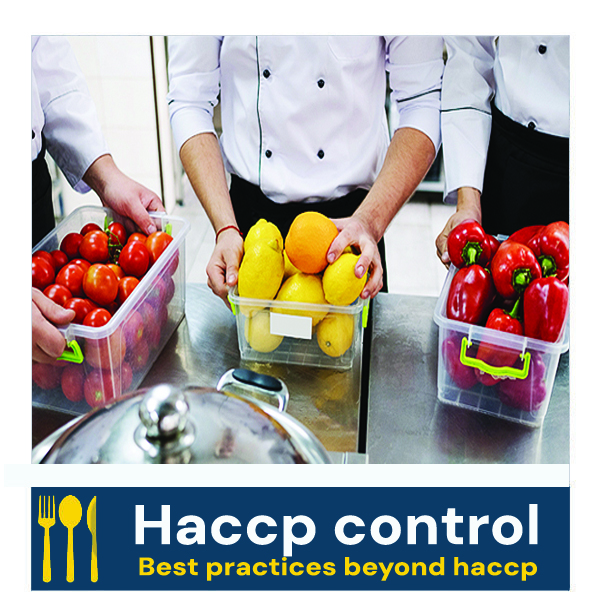“ Sanitizing fruit and vegetables”
Under HACCP (Hazard Analysis and Critical Control Points) principles, the requirement to sanitize fresh fruits and vegetables depends on the specific risk assessment conducted by the food business and how these items are to be used or served. HACCP guidelines emphasize identifying and controlling potential hazards, and if the assessment indicates that fresh produce could be a source of contamination, then sanitizing may be required as a preventive measure.
Key Considerations:
Risk Assessment: Determine if fresh fruits and vegetables pose a microbiological hazard, especially if they are to be consumed raw. If risks are identified, sanitizing becomes a necessary step to mitigate these risks.
Usage and Processing: The need for sanitizing produce also depends on its usage. For example, fruits and vegetables that are cooked may have a lower risk of transmitting foodborne pathogens compared to those eaten raw, like salads or fresh-cut fruits.
Critical Control Points (CCPs): If sanitizing is necessary based on the risk assessment, it should be incorporated as a CCP in the HACCP plan. This involves establishing procedures for how the sanitizing must be done, what solutions or methods should be used, and how the effectiveness of these methods will be monitored.
Sanitizing Procedures: Common methods include using chlorine-based solutions, peracetic acid, or other food-safe sanitizers. The choice depends on the type of produce, the nature of contaminants, and regulatory approvals.
Documentation and Compliance: Document all procedures, concentrations of sanitizing solutions, contact times, and compliance with other safety standards as part of the HACCP records.
Regulatory Perspective:
While HACCP itself does not mandate specific actions like sanitizing unless identified as necessary through hazard analysis, local food safety regulations, and guidelines from food safety authorities (such as the EFSA in Europe) often provide specific recommendations or requirements regarding the handling and processing of fresh produce.
Conclusion from DINEWISE:
Best practices are crucial as they go beyond minimum legal standards to further enhance food safety, improve quality, and reduce risks. Ideally, best practices should complement legal obligations, ensuring optimal safety and quality for consumers.
Who hasn’t seen fruit and veg stored in less than perfect warehouses?
“The Smiles That Keep Them Coming Back”
Winning Hearts, One Plate at a Time









